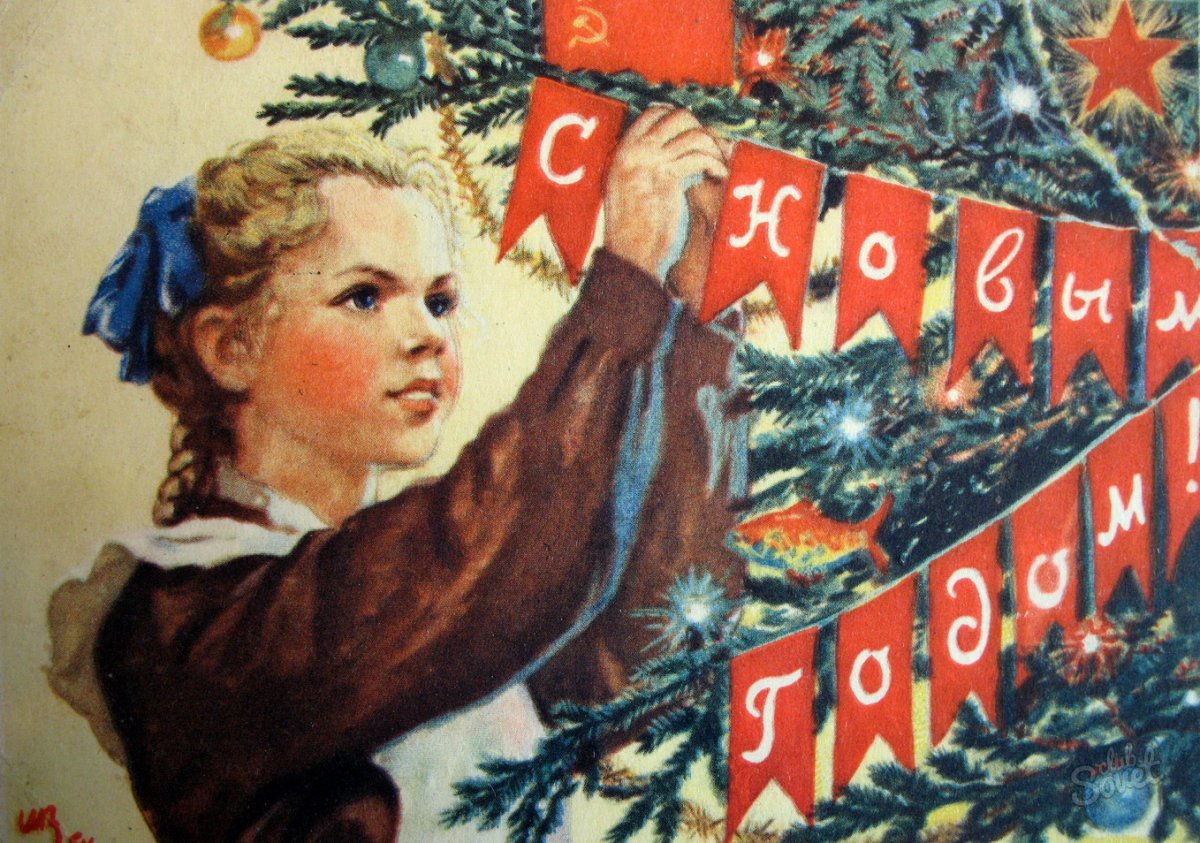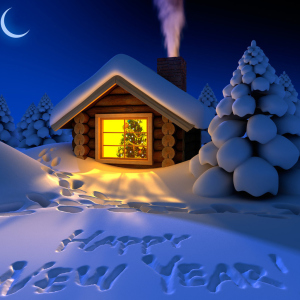Lovely and good Soviet postcards Happy New Year induce nostalgia for childhood, cheer up. Do you remember how to get colorful Christmas cards from friends and relatives? All this touches deeply. Let's make a little history.
The first Soviet postcards Happy New Year
With the advent of the October Revolution, the tradition to send New Year's cards and give gifts collapsed. Religious and Christmas symbols new government prohibits. there was also a "bourgeois Tree" under the ban. We began to make cards for greetings "From the first year of the October Revolution." But people are not popular. Only subjects with the kids loved citizens.
Since 1935, the tradition of celebrating New Year gradually revived. Christmas cards until 1939 produced very little. They are especially prized by collectors.

Soviet military cards Happy New Year
In the early 40-ies of the publishing house "Izogiz" begins to produce small lots of Christmas cards. They portrayed the Kremlin chimes and stars and stories with children. During the Second World War the tradition of giving cards massively revived. The war years imposed on them its imprint. Pictures on them to uphold the spirit of the Soviet people.
Plots military postcards:
- Portraits of national heroes - Kotovsky, Chapayev and other famous personalities of the Soviet period;
- campaign elements such as "Death to the German invaders";
- Soviet soldiers sending greetings to relatives from the front;
- Ded Moroz and Snegurochka. Fairy-tale characters are depicted in the appropriate war perspective. For example, the Claus grandfather shoots from the machine at the Nazis or broom sweeps enemy.
At the end of 1941, the Art Publishing House began to make cards for sending relatives to the front of soldiers. To create pictures, artists enjoyed red and black to quickly print them. Since 1945, Soviet soldiers who were on the European liberated territory were sent home by foreign festive postcards. They were colorful, and the Soviet government decided to establish a mass release of New Year's pictures in the country.

Soviet postcards happy new year of the post-war time
The mass production of New Year's postcards in the USSR started in 1950 and reached a peak by 1953. The inexpensive card became a popular gift, because there were no money on expensive presents from people after the war. Bright postcards were printed on high-quality cardboard. Families were collected, and from a large number of pictures made gifts for the new year - unique boxes and shiny balls.
Plots on postcards were first such:
- Symbols of victory over the fascists and the world on the entire planet.
- Portraits of Stalin.
- Parents with children. Most often depicted mom, grandfather or grandmother with children, because many fathers did not return from the front.
- Traditional Kremlin chimes.
All plots of postcards passed strict censorship. But the themes of fairy tales began to return, pictures with trains, new houses, airplanes, landscapes, animals appeared pictures.

Soviet postcards Happy New Year from the 60s to the 80s
The heyday of the release of New Year's postcards falls in the 60s. Santa Claus with Snow Maiden, funny animals represented by borrowing, quadruple and Kanevsky touched to the depths of the soul. Photo Overtakes Dergilev in the USSR went out with huge circulations.
Some of the plots:
- skaters or skiers;
- couple celebrating New Year's restaurants and another life of Soviet people;
- luxury items of that time - TV, champagne with glasses, children's mechanical toys;
- space theme;
- fabulous characters, good animals and children;
- new Year's toys on the Christmas tree.
In the 80s, a painted picture replaces the photo refractory. She used still lifes with spruce branches, burning candles, serpentine. There are pictures of foil and close pattern.

Soviet postcards Happy New Year give a feeling of a bright holiday and magic. Today they have become collectible, design sample of Soviet times and pleasant memories of childhood.






























